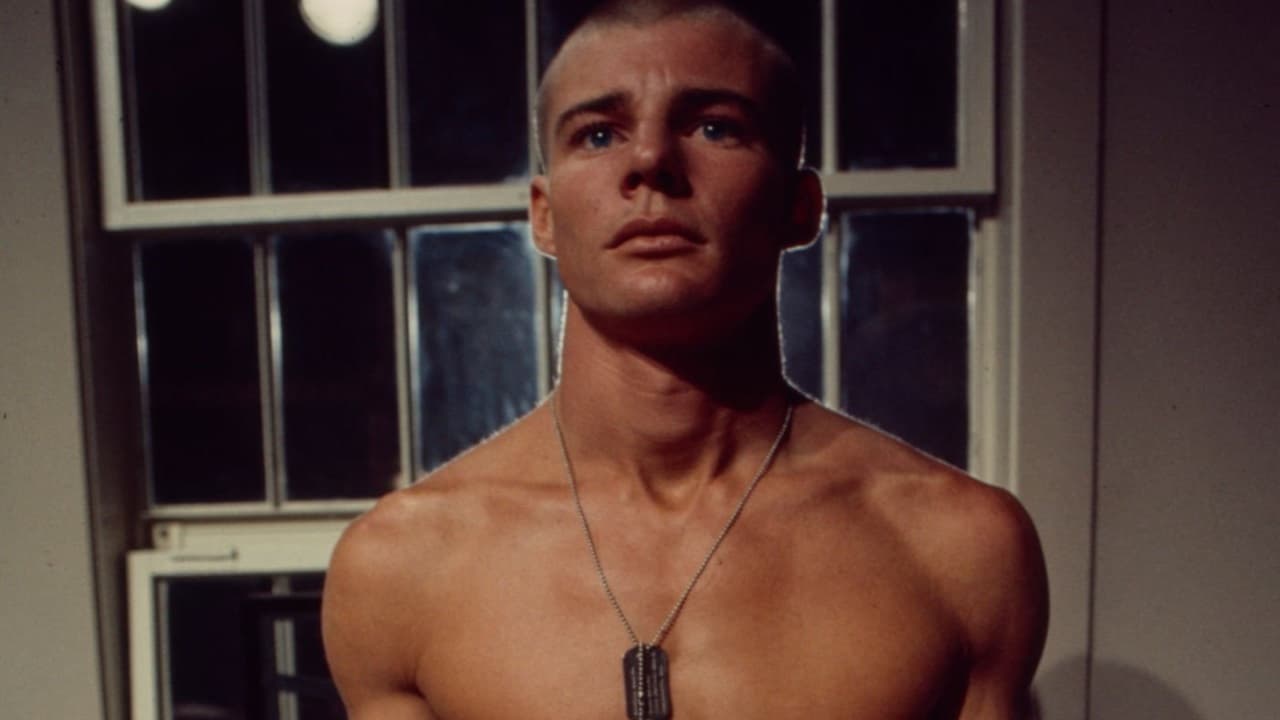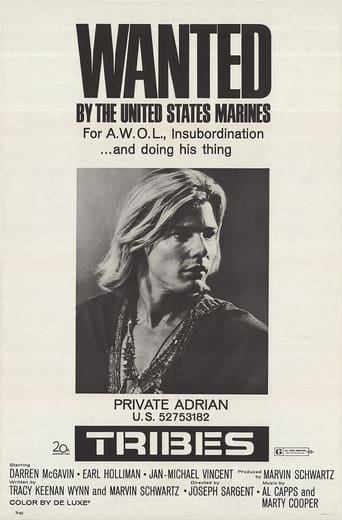



Disturbing yet enthralling
Boring, over-political, tech fuzed mess
The movie is made so realistic it has a lot of that WoW feeling at the right moments and never tooo over the top. the suspense is done so well and the emotion is felt. Very well put together with the music and all.
View MoreOne of those movie experiences that is so good it makes you realize you've been grading everything else on a curve.
View MoreFriday Night AtThe Movies, Nov.10,1970 was my last official day in USAF boot camp in San Antonio, Tx. The barracks dayroom was packed and this aired for the first time. DAJA VUE all over again.
View MoreThe clashing cultures of the title are the U. S. Marine Corps and the flower children whose suns were turning into moons in 1970. The confused and pacifistic draftee, Jan-Michael Vincent, tells his equally confused but thoroughly committed Drill Instructor, "We belong to different tribes." He is SO right. But the title could have as easily been taken from John Ciardi's poem, "My Tribe" -- "Our boys hone knives in their dreams of you." Ciardi wasn't thinking of Vietnam but of the Cold War, but the sentiment applies to all of human conflict, the darker part of human nature that exalts US while demonizing THEM.The movie is properly done -- a TV effort with good acting and directing and modest production values. If Jan-Michael Vincent is a bit weak as the reluctant boot, that's more than made up for by Darren McGavin's subtle portrayal of a bellowing but fundamentally humane DI.The abusive drill instructor is of course a cliché. Can anyone make a movie about Marine Corps boot camp without have a sadistic and vulgar DI knocking some maggot's ears off? There are one or two other stereotypes. Vincent himself is a hippie who has lived on a commune. Remember them? Ahsrams for the common man? Along the way he's picked up certain mental tricks resembling self-guided imagery that enable him to endure pain and humiliation not only without protest but with a big smile. He chants. He sits in the full lotus position. He teaches others in his platoon how to do it. All this drives McGavin crazy with fear, anger, and admiration. All he's lacking is curiosity. To him, it's all "double talk." He's reduced to issuing orders such as, "There will be no more chanting in my barracks." And it IS double talk. You just can't make yourself a tower of strength by imagining that you're in some other, happier realm. It doesn't work. I hate to do this but I have to use another quote to illustrate how common sensical this observation is, what historical depth it has. Sir John Falstaff in one of Billy Shakespeare's plays (I forget which), has a hilarious comment: "There never was philosopher/ could bear the tooth ache patiently." I'm tempted to add another highbrow allusion -- Edgar Allan Poe's tale, "The Facts in the Case of M. Valdemar," in which a man is hypnotized at the moment of death and forced to remain alive until, when brought out of the trance, he turns to a rotting corpse. But, upon thinking it over, I don't believe I will.Anyway, the point is -- What was the point anyway? Oh, yes. "Recondital meditation" doesn't work when somebody is hitting you over the head with a crowbar. That was a popular cliché at the time. Another stereotype in the film is the Chief Drill Instructor, played by Earl Holliman as a lunatic redneck who hates hippies and, presumably, everybody else who admits to having feelings other than pride, loyalty, and an unquenchable desire to kill -- the last stashed away somewhere in his cognitive hibernaculum. Values aside, it's a poor performance. Earl Holliman may be one of the nicest guys in the world for all I know, but his virtue as an actor has always eluded me.Other, equally easy stereotypes, are deftly avoided by the writers. McGavin has no wife to take out his frustration on, so there can't be any conjugal arguments. In fact he has no home life at all. He has a small room in the same barracks as his platoon, which must be like a corrections officer living in a rather nicer cell than the other inmates at San Quentin.The direction is by Joseph Sargent, who had a long if not especially distinguished career in both TV and feature films. He has one memorable shot. McGavin, to teach Vincent a lesson, has him pitted against one man after another, Cool Hand Luke fashion, in a pugilstick contest until he drops from exhaustion. Then there is a crane shot as the camera lifts skyward and shows us the wide ring of boots at rigid attention while McGavin stands over the prostrate Vincent, looking around defiantly, like a dog who has just won the fight without realizing the victory was pretty empty.The theme song is dumb -- some would-be gumbaya folk ditty about a lonesome soldier who is a victim. I don't believe the composer and lyricist realized that the victims included McGavin as well as the sympathetic hippie.Interesting to follow the ritualized procedures of a Marine boot camp. They left us with shorn skulls too. What I remember most about it, is being surprised that so many of us had hairless scars forming arcs across our scalps. Somebody from one of the other tribes, probably.
View MoreI gave it a 10, not because it's perfect, but I'm pretty prejudiced about it. "Tribes" is really part of a long tradition in the movies (the misfit becomes a model soldier because of the tough but decent sergeant), but of course it plays around with all the rules - in the first place, you're practically certain that the misfit WON'T be influenced all that much (or that he SHOULD BE), and in the second place, HE begins to influence the SERGEANT! Against his will, of course ("It's not my drawing!"). In spite of being made in 1970, it's far from being strictly a Vietnam-oriented movie. And it's even more than a "hippie vs. the Establishment" movie (though those are fine with me), but a lot more general (I've heard that it was endorsed by the Marine Corps, I guess because it they considered it pretty "balanced".) I don't know much about meditation, but one of the best scenes in this film has Private Adrian describing it to the other recruits, while they listen with "rapt attention", including Scrunch Gordon, the "jock" who hated him at first. Which is another thing - it does without genuine stereotypes, except for Earl Holliman's DePayster, who's nice enough in other scenes, but becomes an over-the-top redneck at the sight of Adrian. (And Holliman is completely entertaining doing those scenes.) Of course, it does have "stock characters", ones that work - like John Gruber as the tragic character, Danny Goldman as the completely comical one. (According to this listing, Bud Cort was in it, though I've never recognized him.) As far as the completely funny scenes, Darrin McGavin is really great in them, giving almost an Oliver Hardy kind of look sometimes (a little like his wonderful character in "A Christmas Story"). And he's never less than great in the other scenes (he and Vincent seemed to work perfectly together). And Jan-Michael Vincent is completely believable as Adrian (because of that, I've always "typecast" him as that kind of character, even though I've hardly ever SEEN him play a similar one).
View MoreI saw this movie when it came out 35 years ago (has it really been that long?). Most memorable scene was the one in which free spirit hippie Jan-Michael Vincent was forced to hold up two full buckets of water (one in each hand) shoulder high as punishment by taskmaster Darrin McGavin. Vincent turned the tables by meditating on a carefree afternoon spent frolicking on a sun-dappled hillside with a comely young miss. His blissed-out state enabled him to maintain the buckets aloft indefinitely. This naturally drove the by-the-book McGavin to distraction. Enjoyed the culture clash theme. Exemplary writing, directing, and especially acting (McGavin superb as the grizzled DI, and Vincent at his charismatic best).
View More